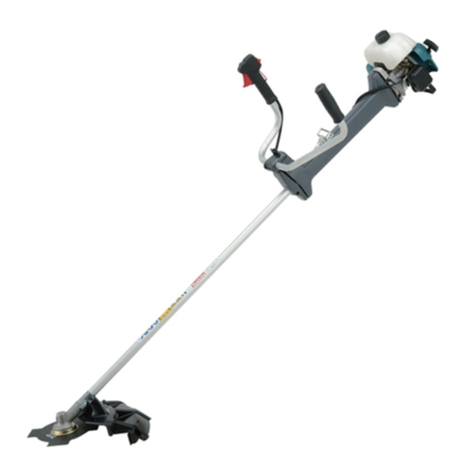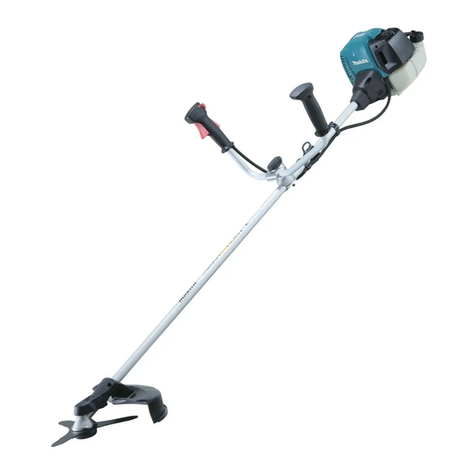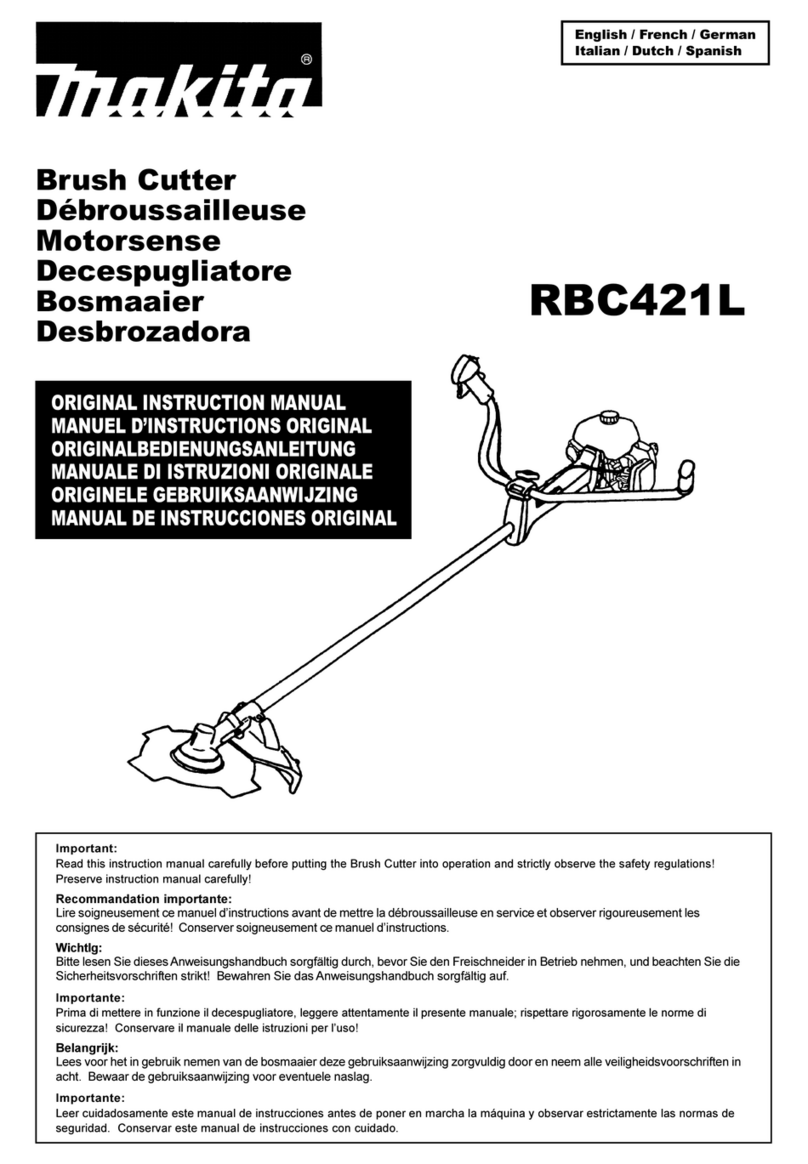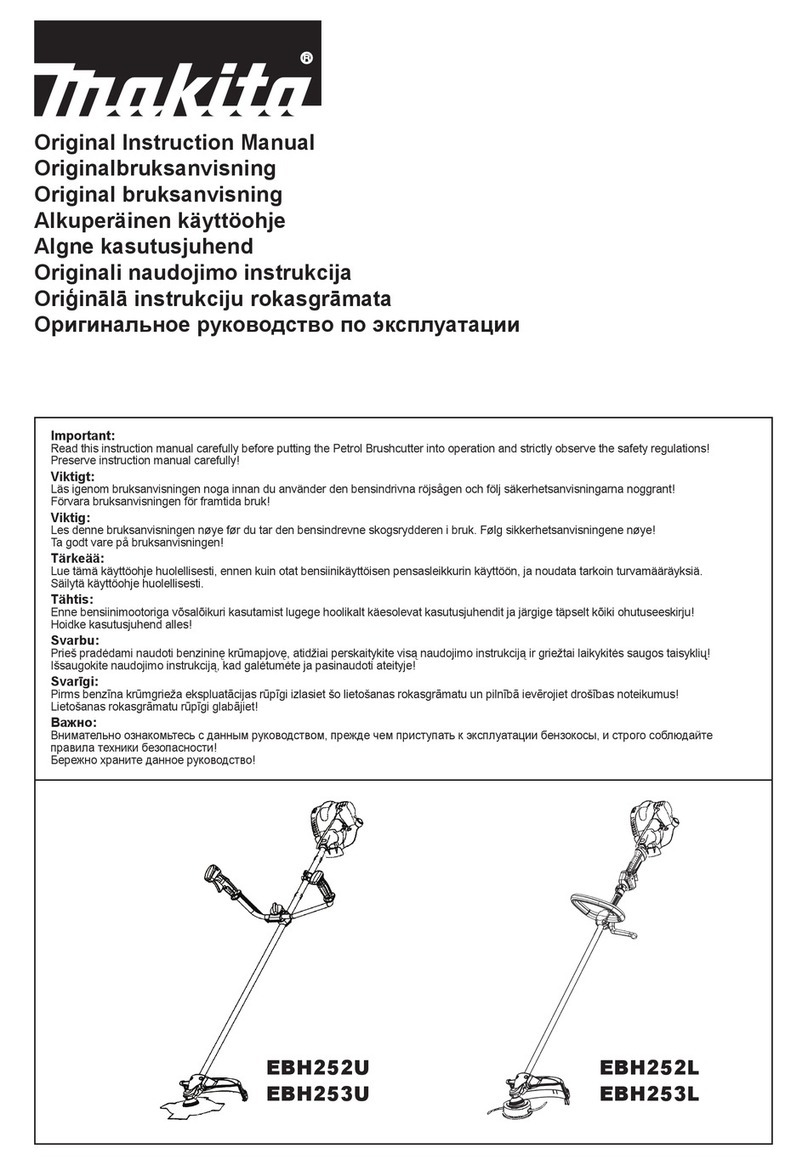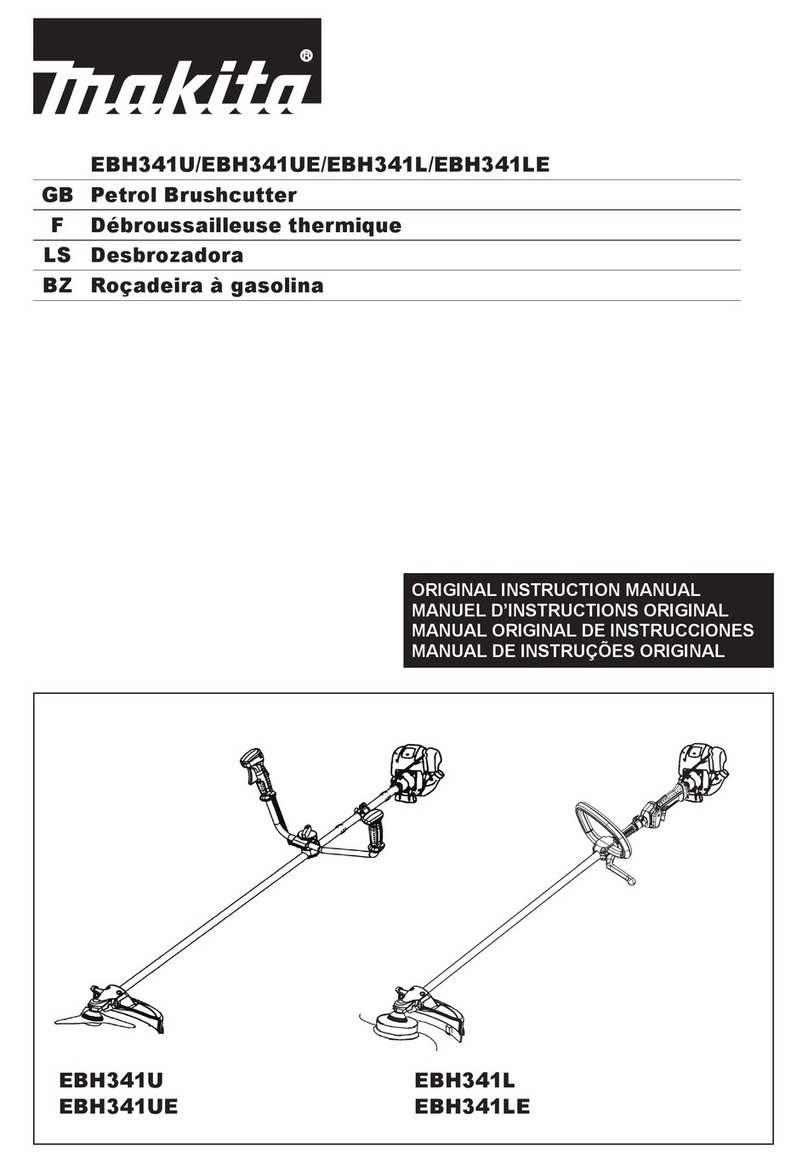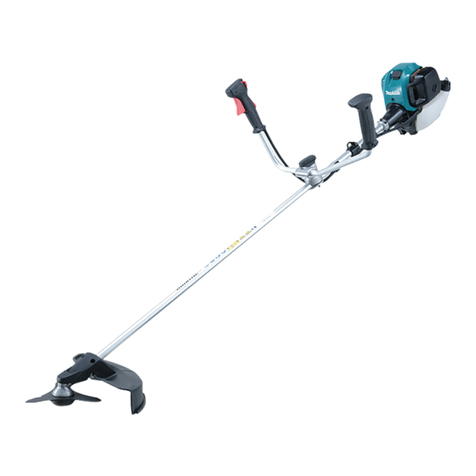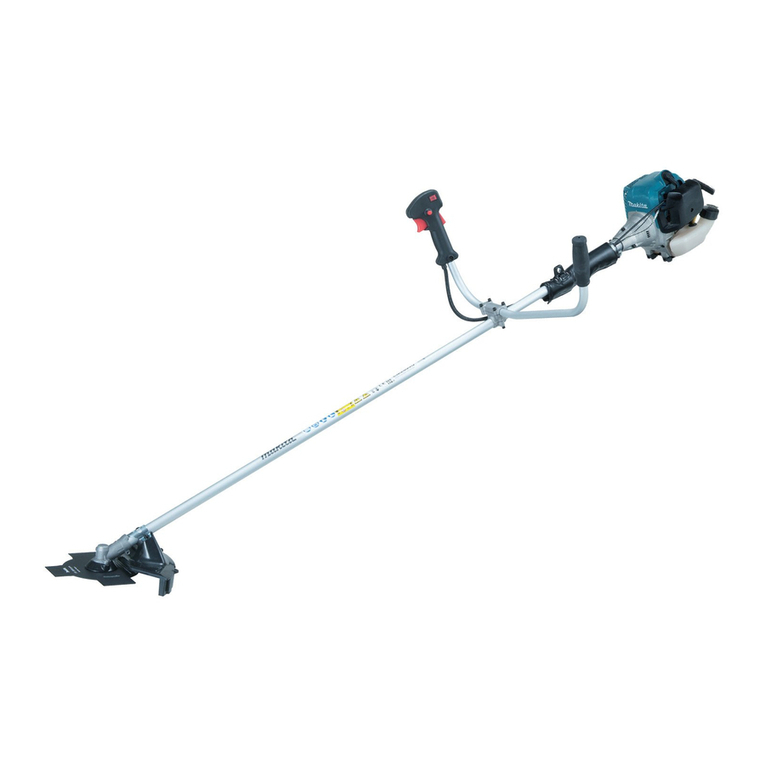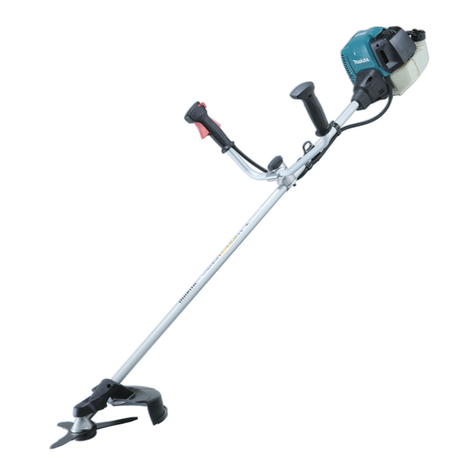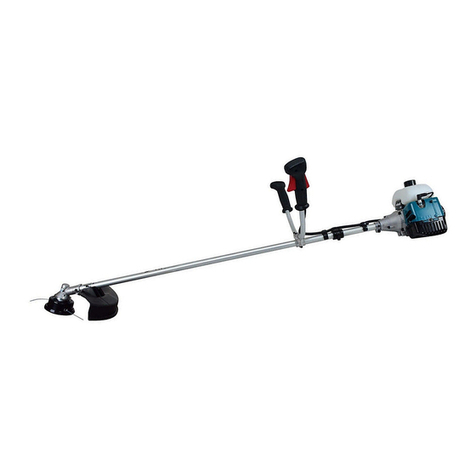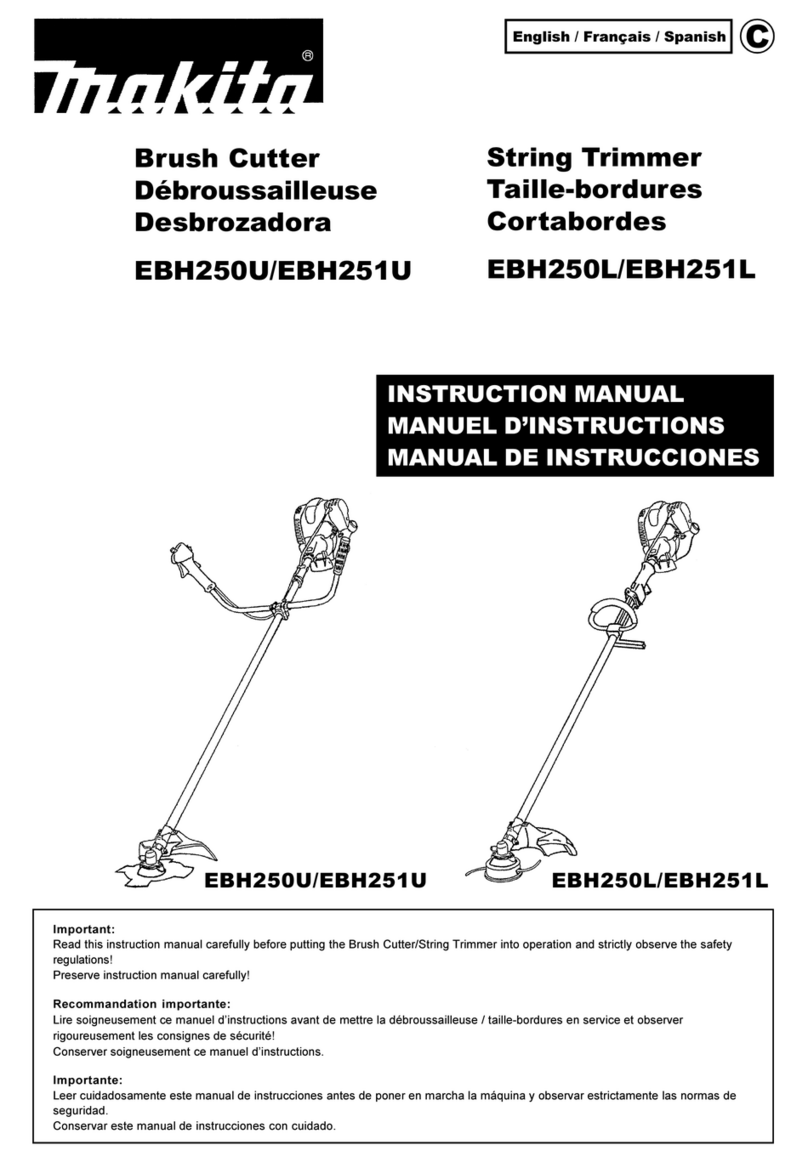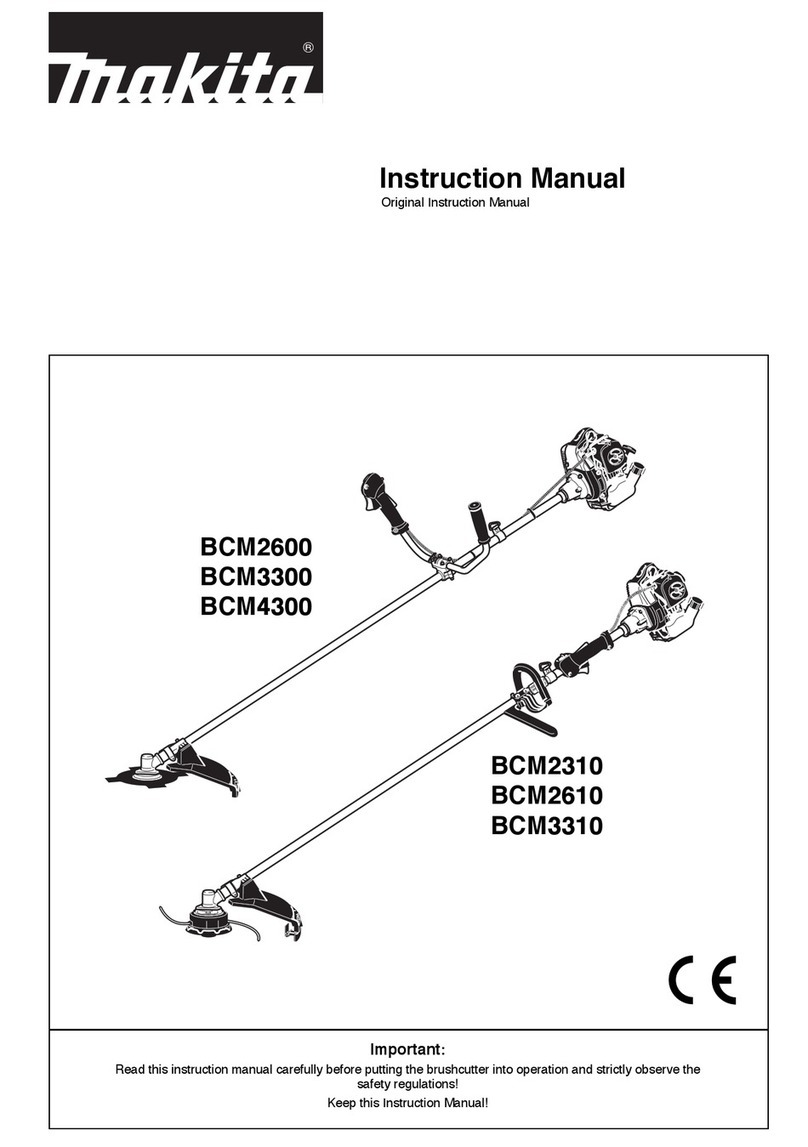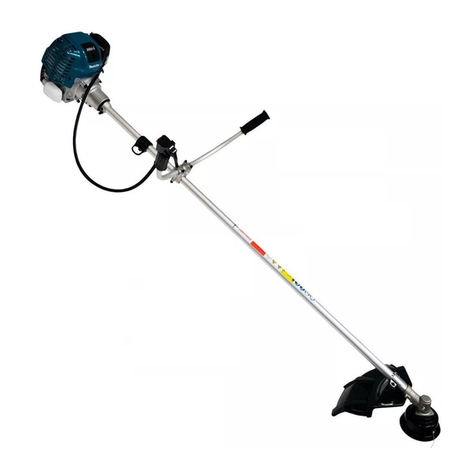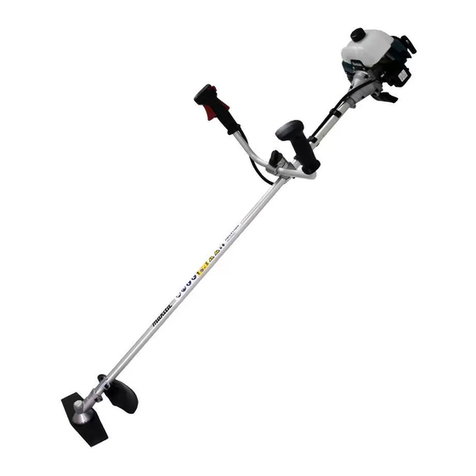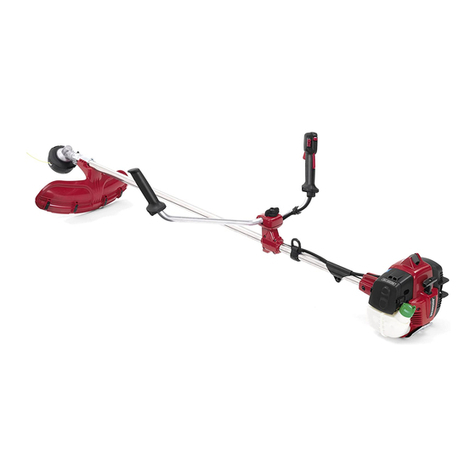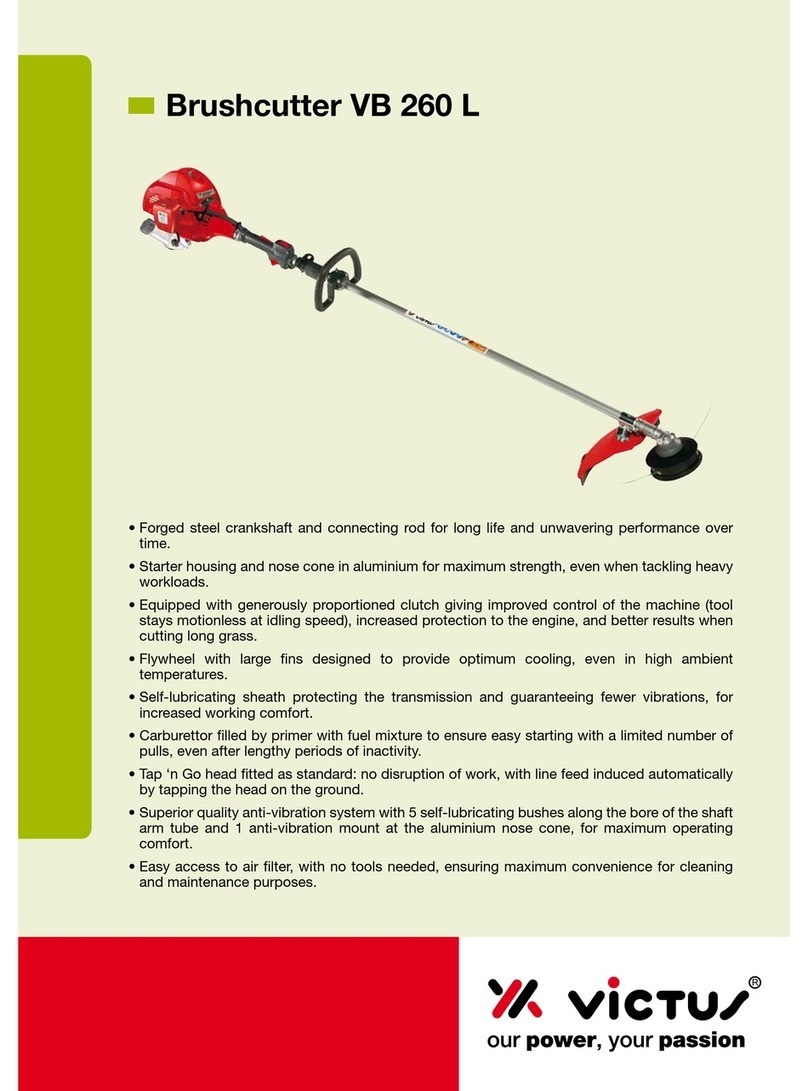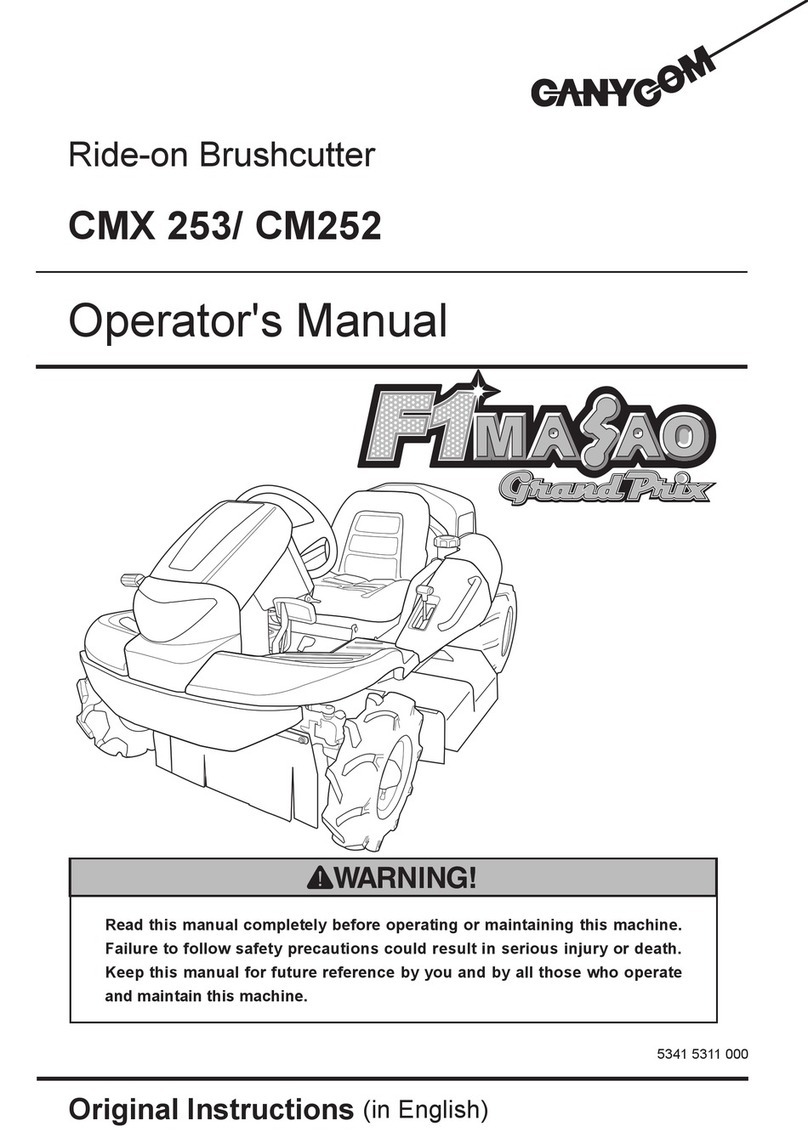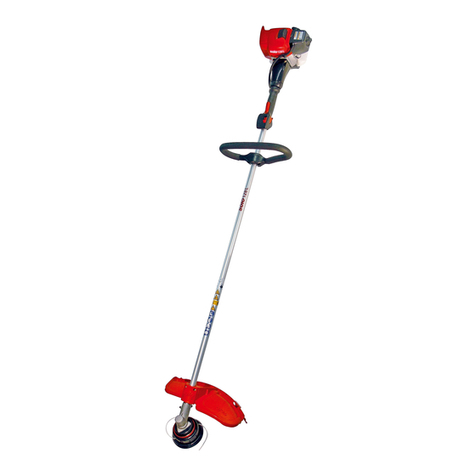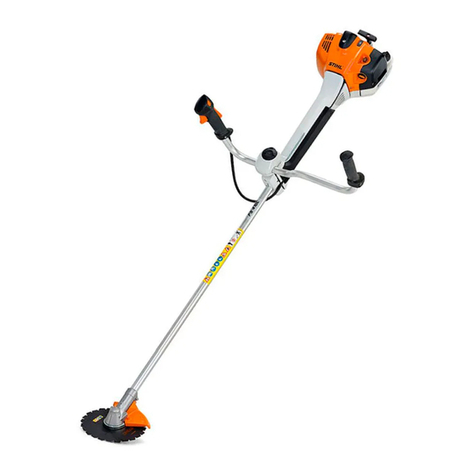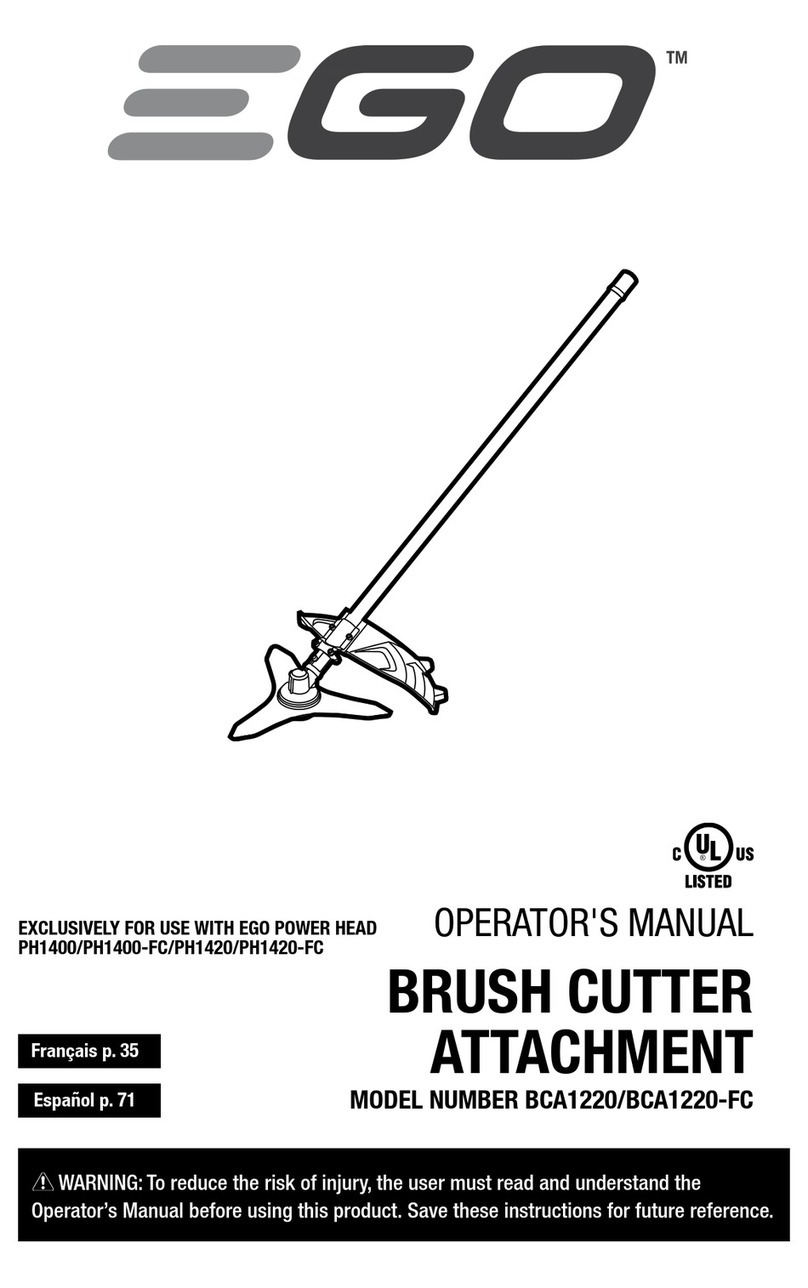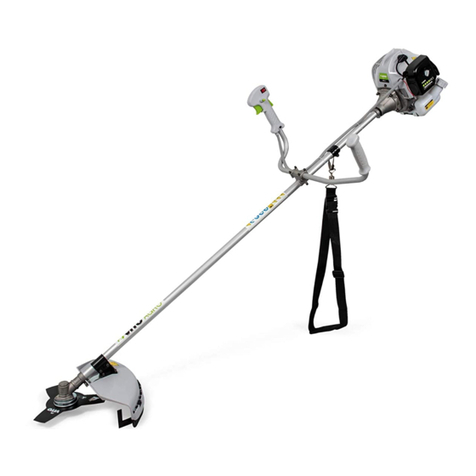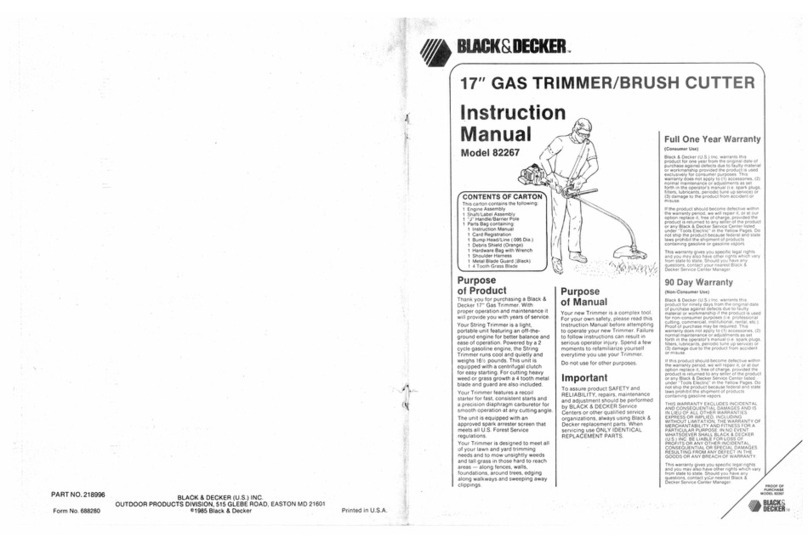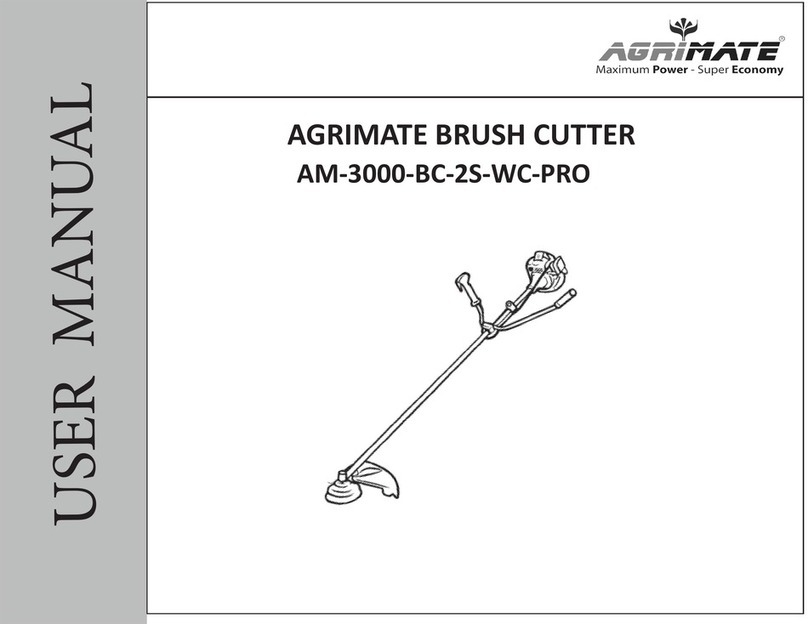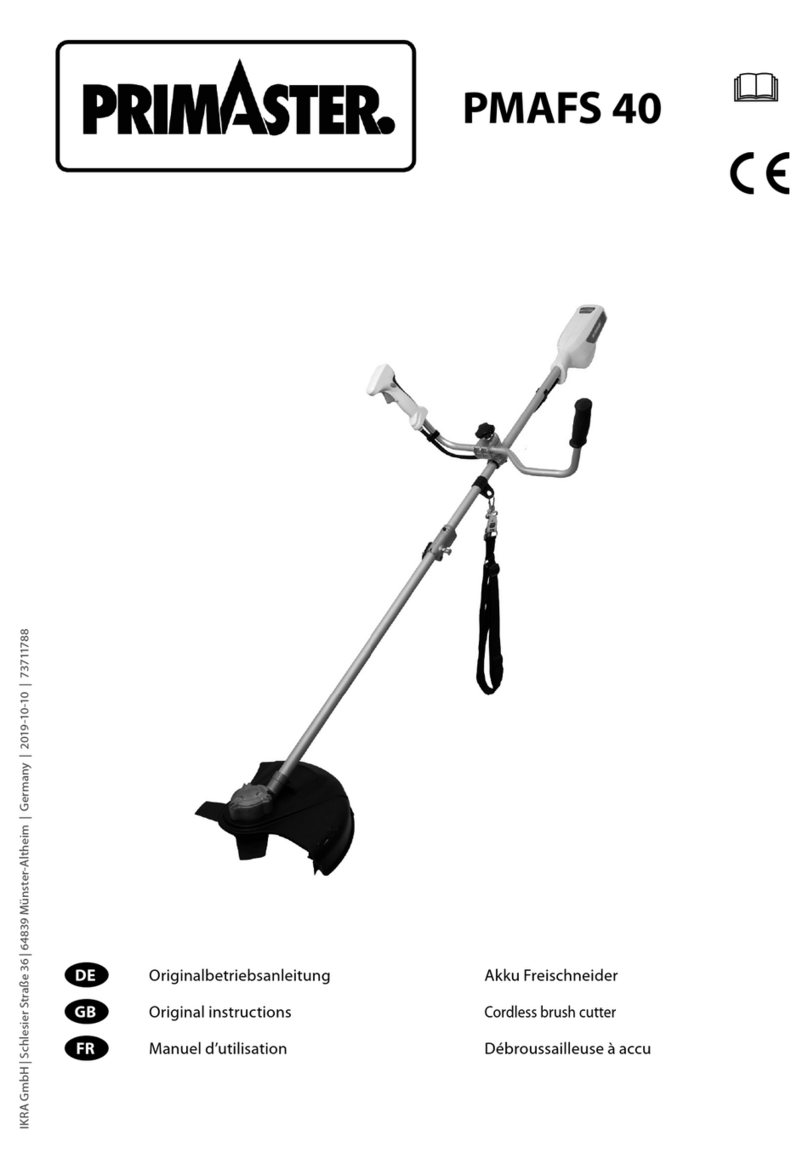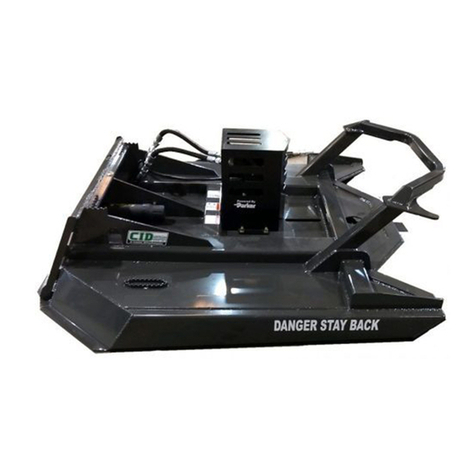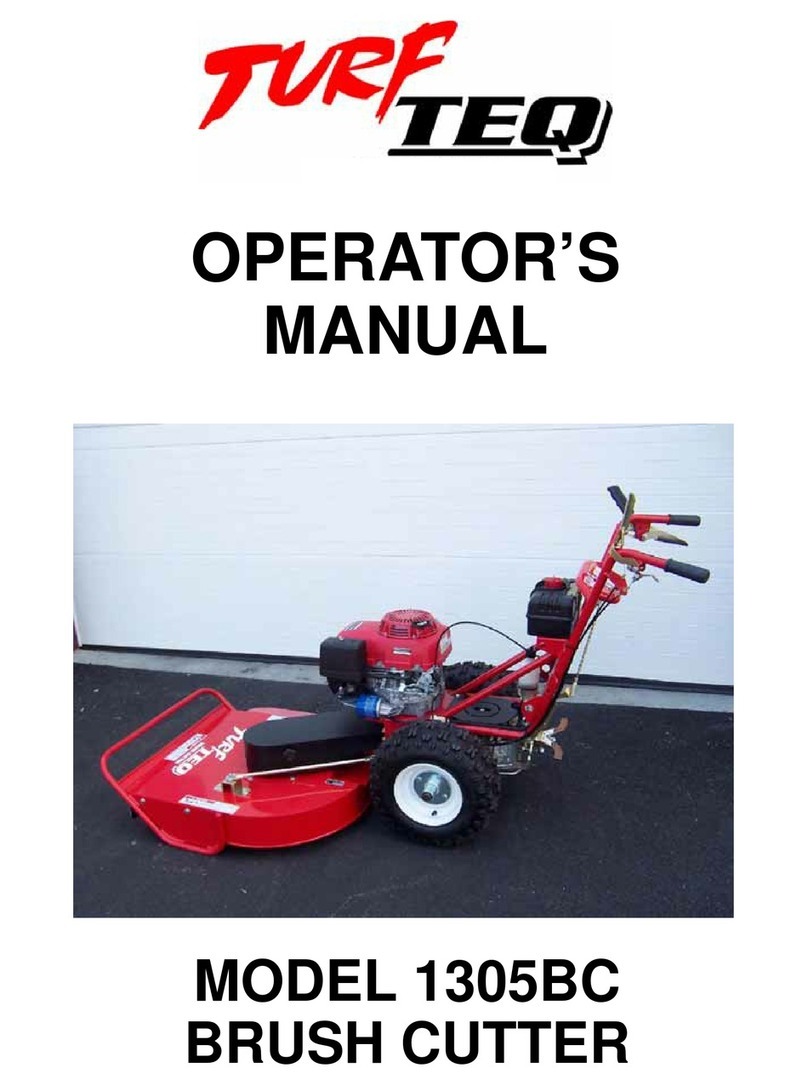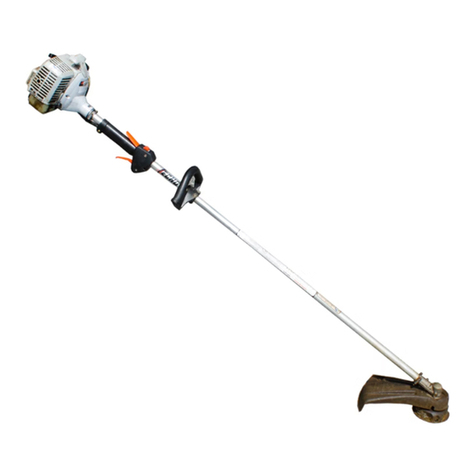4
SAFETY INSTRUCTIONS
General Instructions
– To ensure correct operation, user has to read this
instruction manual to make himself familiar with the
handling of the Brushcutter. Users insufciently informed
will risk danger to themselves as well as others due to
improper handling.
– It is recommended only to lend the Brushcutter to people
who have proven to be experienced with Brushcutter.
Always hand over the instruction manual.
– First users should ask the dealer for basic instructions
to familiarize oneself with the handling of an engine
powered cutter.
– Children and young persons aged under 18 years must
not be allowed to operate the Brushcutter. Persons over
the age of 16 years may however use the device for the
purpose of being trained only whilst under supervision of
a qualied trainer.
– Use Brushcutter with the utmost care and attention.
– Operate the Brushcutter only if you are in good physical
condition. Perform all work calmly and carefully. The user
has to accept liability for others.
– Never use the Brushcutter after consumption of alcohol
or drugs, or if feeling tired or ill.
Intended use of the machine
– The Brushcutter is only intended for cutter grass, weeds,
Bushes, undergrowth it should not be used for any other
purpose such as Edging or hedge cutting as this may
cause injury.
Personal protective equipment
– The clothing worn should be functional and appropriate,
i.e. it should be tight-tting but not cause hindrance. Do
not wear either jewelry or clothing which could become
entangled with bushes or shrubs.
– In order to avoid either head-, eye-, hand-or foot injuries
as well as to protect your hearing the following protective
equipment and protective clothing must be used during
operation of the Brushcutter.
– Always wear a helmet where there is a risk of falling
objects. The protective helmet (1) is to be checked at
regular intervals for damage and is to be replaced at
the latest after 5 years. Use only approved protective
helmets.
– The visor (2) of the helmet (or alternatively goggles)
protects the face from ying debris and stones. During
operation of the Brushcutter always wear goggles, or a
visor to prevent eye injuries.
– Wear adequate noise protection equipment to avoid
hearing impairment (ear muffs (3), ear plugs etc.).
– The work overalls (4) protect against ying stones and
debris.
We strongly recommend that the user wears work
overalls.
– Special gloves (5) made of thick leather are part of the
prescribed equipment and must always be worn during
operation of the Brushcutter.
